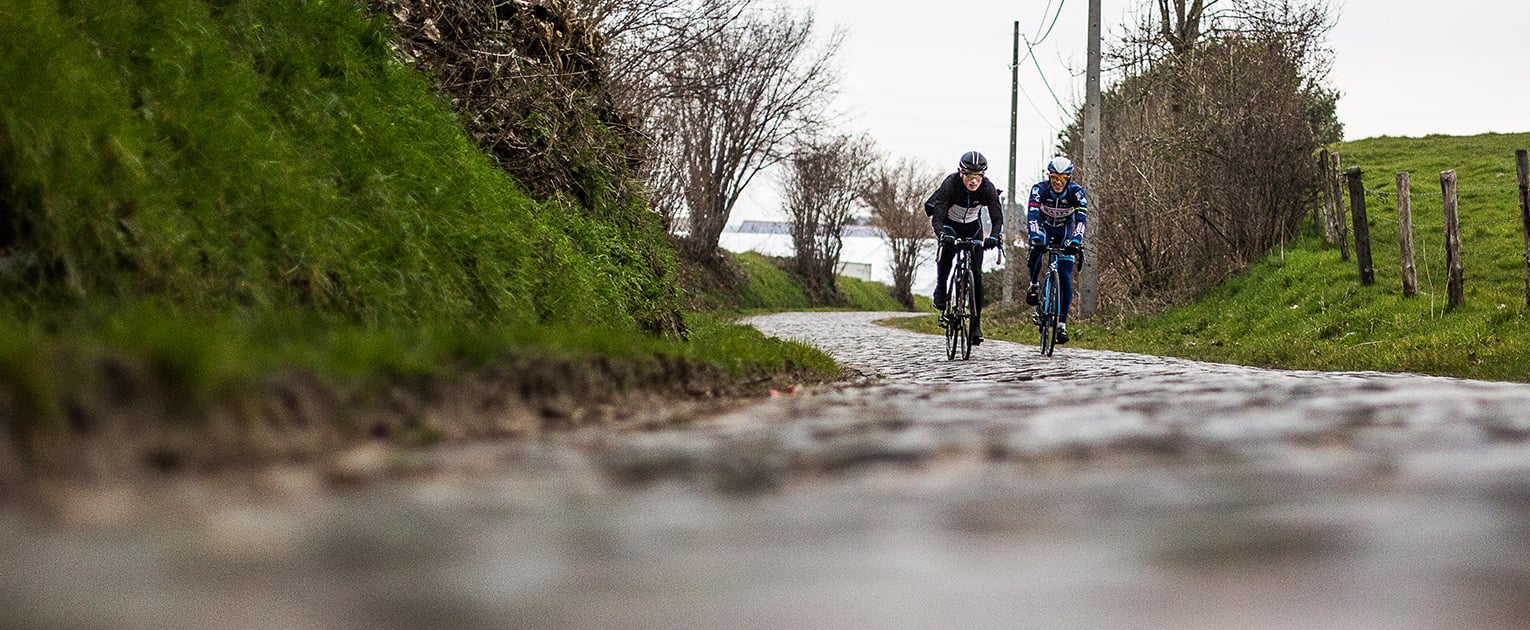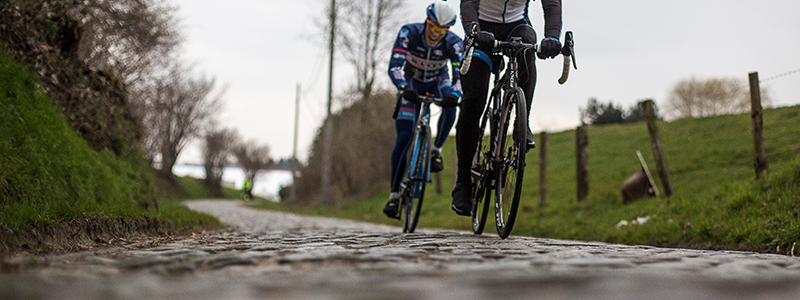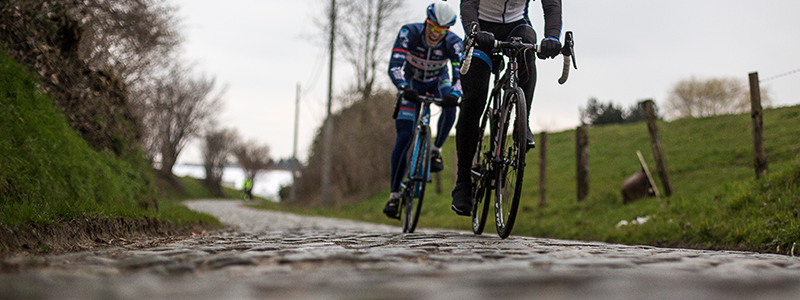Comment changer votre cassette
Comment changer votre cassette
Lire l'Anecdote

You see them every spring in the European cycling classics, cobblestones! It is not convenient to ride over cobblestone roads from scratch. You have to prepare yourself to get ready to conquer these roads, because it is a technical adventure. Take these 10 tips in mind when you decide to accept this challenge.
In the early days everybody used 23mm tires filled with 8 bar. Today it is far more popular to use wide tires with less pressure. If you are going to conquer the cobblestone roads try to use tires with a minimum of 25mm width. Even better are 28mm tires like the pro’s use in the spring classics in Belgium and France. Make sure the tires are firm. Avoid using the smooth competition tires because that considerably increases the chance of puncturing.
Pressure in your tires depends on your own weight and the width of the tire. Like in some European spring classics the pressure in the tires have to be between 5 and 6 bar. This pressure may be higher when you are a bit heavier or when you drive on a narrow tire. But pressure rates around 8 to 9 bar is absolutely out of question. When you ride on a wider tire with a lower bodyweight, the pressure can be around 5 bar.
Riding on tires with less than 5 bar is not recommended because it increases the chance on a snakebite. This occurs when the inner tube gets stuck between the rim and the tire. This could be a good reason to consider to drive tubeless.
When you drive on cobblestone roads for the first time, you will get the tendency to hold your handlebars tight and convulsively. This is exactly what you have to avoid. Holding on tight will lead to stiff and painful fingers which you can’t bow back afterwards. So, hold on to your handlebars loosely and let your bicycle lead the way over the cobbles.
The best way to hold your handlebars when riding over a cobblestone road is on the straight part. Not at the brake levers. Holding on to the straight parts forces you to sit more upright and makes it easier to grasp on to it more loosely. It is possible to hold on to the handlebar brakes but this makes it harder to let the bike finds its own way.
If you are preparing for a long ride with a lot of cobblestone roads, it is recommended to double wrap up your handlebars. This will provide cushioning and will be more pleasant for your hands. Definitely when you are inexperienced and you don’t have the courage to let the handlebars go a little bit. When you are more experienced you will not need a double wrap up on your handlebars.
The most high carbon rims won’t budge and the aerodynamic advantage is on cobblestone not important. A rim with more internal width makes the tires more round and tick, which is a good choice.
You will mention that the pro’s use high rims in the classic tours anyway. This is because they have to compete against each other also on the roads in between the cobblestone roads. They can’t use an aerodynamic disadvantage on these parts.
Many times the best part of a cobblestone road to ride on is the ‘bump’, exactly in the middle of the street. This originated because tractors, trucks and cars have pressed down the cobbles on the sides of the road and they lay further apart from each other.
The harder you drive over the cobblestones, the easier it is. If the cobblestones approach, it is time to speed up. Sprint towards the cobblestone road and try to hold on to your pace while riding on this strip. Try not to switch back in gear. You will mention that it costs a lot of energy but try to get to the end of the strip.


It is smart to drive 1 or 2 steps heavier in gear than normally. In this way you are able to hold better pressure on your rear wheel and it helps you to keep your pace. In a lighter gear you kick in between the strikes of the cobbles which gets you out of rhythm and sets you back in speed. It will costs a lot of energy so try to keep your pace when you start to lose speed. Try to push through as long as you can!
Look ahead! Do not look just in front of your tire, as you are not able to anticipate on big wells or imperfections in the road. So, look some meters in front of your bike to have enough time to anticipate. This gives you the ability to adjust your course and avoid punctures.